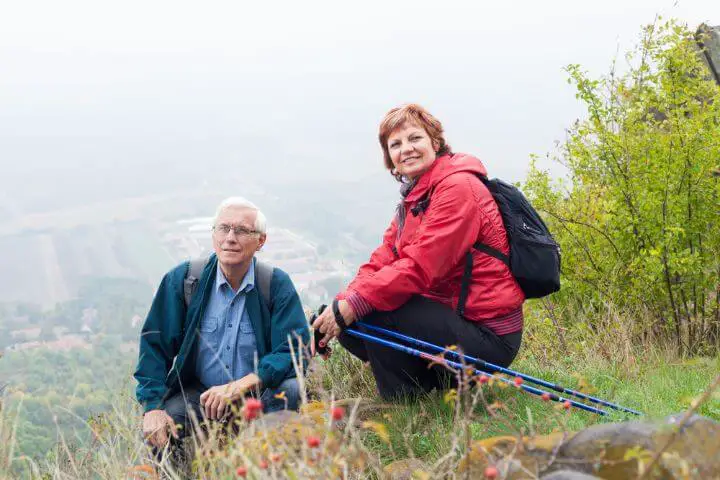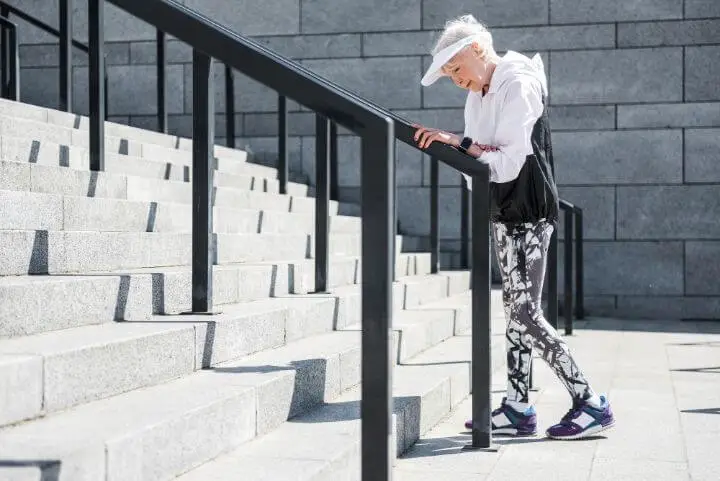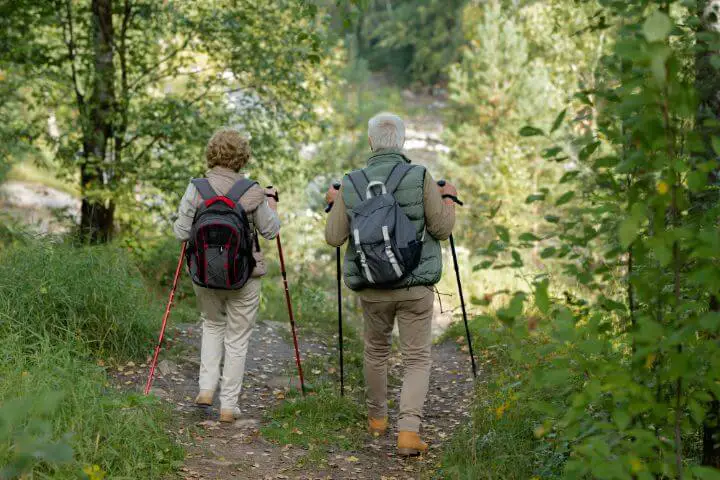Hiking is an enjoyable sports activity. It not only keeps you fit but also uplifts your mood and morale. If hiking has been part of your active lifestyle, it can be pretty depressing to let go of it post a knee replacement surgery.
But fret not! With the advancement in medical sciences and technology, you can expect complete recovery after knee replacement surgery.
With proper post-operative care and a regular rehabilitation routine, you can get back to hiking before you know it. Read on to learn more about how you can get back to your favorite sport after total or partial knee replacement surgery and the recommendations for activity after knee replacement.
Contents
Precautions and Preparations
You will have to make adjustments to your lifestyle while your knee heals after the knee replacement surgery. These changes will help in the recovery phase of the knee and help your body get back to going on your favorite hike.
- Cane or Walker- A Must
You might feel like a new person after the knee replacement but remember that you have a foreign body in your system now, and it will take time to adjust and heal.
You may also like Chairs for Knee Replacement Patients
Use a cane/walker/crutches to prevent falls. Any minor accident can damage the knee and disrupt the healing process. It could require another surgery too.
- No Lifting Heavyweights
Avoid lifting anything remotely heavy soon after the surgery. The replaced knee is quite fragile, and any pressure on it can cause damage. So take life easy and stick to the precautions suggested by your doctor. You should even avoid lifting heavy backpacks while hiking after knee surgery.
- Reduce Body Weight
The knee joints take most of the body weight leading to excessive wear and tear that ultimately results in knee replacement surgery. To recover completely after the procedure, the first thing the doctors and physiotherapists ask patients to do is lose weight.
It relieves the knee joints of any excessive stress. Consult a good dietitian that will suggest a healthy, nutritious diet providing all the necessary nutrients yet controlling your weight. Also, make sure that you do the exercises and movements as recommended by your physiotherapist.
- Ice Wrapped Towel or an Ice Pack
In the initial weeks of recovery, you might experience pain or swelling after any aerobic activity. You can relieve it by elevating the leg and applying an ice-wrapped towel around it or an ice pack.
You might also like Best Knee Pillows After Knee Replacement
Diligent Rehabilitation – The Way Forward
Regular exercises with an expert are a must for complete recovery after knee replacement surgery. The rehab therapy program is very gradual, and the recovery time for each person differs.
With proper rehabilitation, the new knees get used to mobility and movement. From literally taking baby steps to climbing the highest mountain, the journey is long and arduous.
With proper guidance from your knee surgeon and physiotherapist, you can get back to any aerobic activity, including hiking. Here is how you should pan out your rehab routine.
- Easy Exercises
The rehab program begins with doing easy exercises for the knees for 20-30 minutes. These should be your first activity after knee replacement surgery.
These exercises focus on increasing the circulation to the leg muscles and feet, critical for preventing any blood clots and strengthening the muscles around the knee. Some recommended exercises post knee joint replacement surgery are knee bending and straightening, tightening and loosening of thigh muscles, straight leg raises while lying in bed, and ankle flex and point.
- Walking
After the new knee joint has regained strength, you should first start walking for about 10 minutes with support and then without it. Slowly, increase the amount of time you walk but remember not to overstrain your knee.
- Climbing and Descending Stairs
Before thinking of hiking up your favorite trail, strengthen your knees to climb up and down your house stairs. At first, you might need a handrail for support and walk only one step at a time, but progressively, you will be able to climb independently. It is an excellent activity for endurance and strengthening.
You might also like Medicare Knee Replacement Age
- Advanced Exercise Routine
Once you have regained independence in walking for short distances, you should increase your activity level.
Some of the recommended exercises and activities to strengthen the knees and improve bone health include standing knee bends, knee exercise with a resistance band, assisted knee bends, and more.
These exercises increase range of motion but should be done under the guidance of a trained physiotherapist.
- Exercycling
It is an excellent way to regain knee mobility and muscle strength. Initially, you would need to adjust the bike seat height so that your foot touches the pedal with the knee almost straight.
Start with paddling backward and then ride forward once the backward cycling motion is comfortable. At about 4-6 weeks, increase the tension on the exercise cycle and build upon the time, taking it to 20-30 minutes, 3 to 4 times a week.
- Short Trails
Once you are confident of running errands around the house and taking your pet out for a short walk, it is time to take the plunge and go on short hiking trails.
Initially, begin with a mile hike; Carry a cane with you for support and choose a plain, even path. Gradually increase the distance and go on an 11-mile hike, and before you know it, you will be back to hiking and even doing 3-day hikes. However, avoid downhill walking for a while as it puts undue stress on the knee.
Must-Have Hiking Gear
Now that you are all set to get back to hiking after a long sabbatical, some gear should now become a must-have in your hiking kit.
Orthopedic surgeons recommend having appropriate hiking braces for anyone with knee issues and especially for those returning to hiking post knee surgery.
- Knee Sleeve – It offers moderate support and gives overall stability to the knee joint.
- Knee Strap – This is more minimalistic, surrounds the knee offering compression to the thigh muscle surrounding the knee cap. It supports you just above and below the knee, making it comfortable to wear on hot days.
- Knee Pain Relief Brace – This is a more minimalistic design as compared to a knee strap. It is just one strap that is tied just below the knee.
You might also like How Much Does a Knee Replacement Weigh
Post-Surgery Hiking Tips
You can return to hiking after knee surgery but, there are certain precautions that you must take to protect the new knee and have a hassle-free hiking experience. Here are a few tips to keep in mind when you set off on the next trail.
- Lighter Shoes
You may have always worn the old-styled big boots that are sturdy for traversing through uneven terrain but avoid them at all cost. They add to the weight on the body, which could put pressure on the knees. Instead, invest in good-quality sport’s shoes with proper cushioning and good soles.
- Hiking Poles
Hiking sticks should be on the top of your checklist before setting out for hiking, especially after knee replacement surgery. These poles are helpful while going downhill as they put less pressure on the knees. Practice using them before you set off on your first hiking trip.
- Travel Light
A heavy backpack is often the culprit for aches and pains in the knee and back. So it is best to travel light and carry only those things that you cannot do without.
- Stretching Is the Key
Before your knee surgery, you may have been able to do without stretching your muscles before the hike, but now you need to be more careful and vigilant about it.
Loosening the muscles before the hike makes the legs and knees more pliable for walking. After the hike, all the muscles tend to contract. Therefore, it is a good idea to stretch them again to reduce muscle fatigue.
You might also like Best Age for Knee Replacement Surgery
The Final Word
For globetrotting hikers, age ultimately catches upon their bodies. Knees are the largest joints in the body and bear the maximum load, hence often, they give way, and many have to undergo knee replacement surgeries.
However, that is not the end of your affair with hiking. With proper rehab and precaution, you can surely get your knees back on the trail. The key is to be patient and perseverant.
If you opt to have knee replacement surgery, read our guide on preparing for your surgery.
We also wrote articles with precautionary measures for activities such as driving, yoga, running, skiing after knee replacement surgery.




